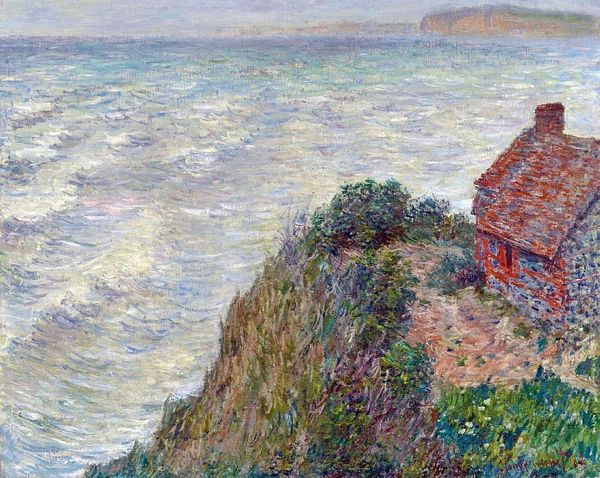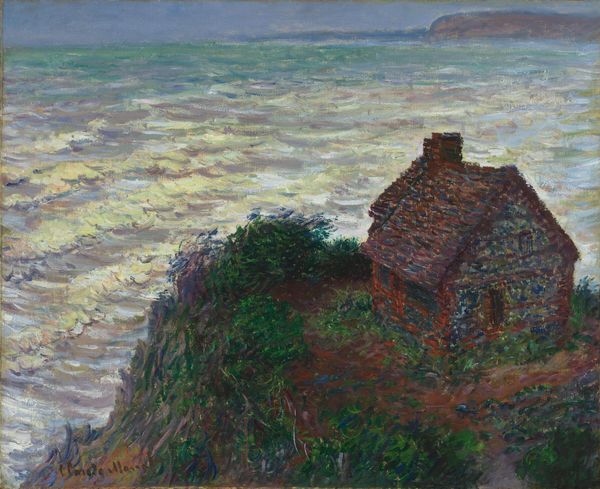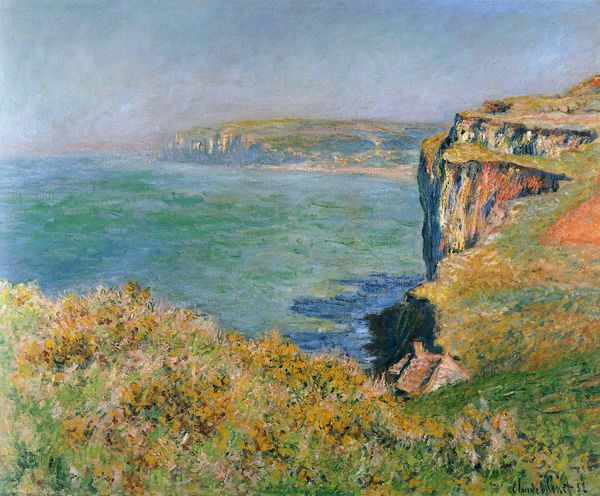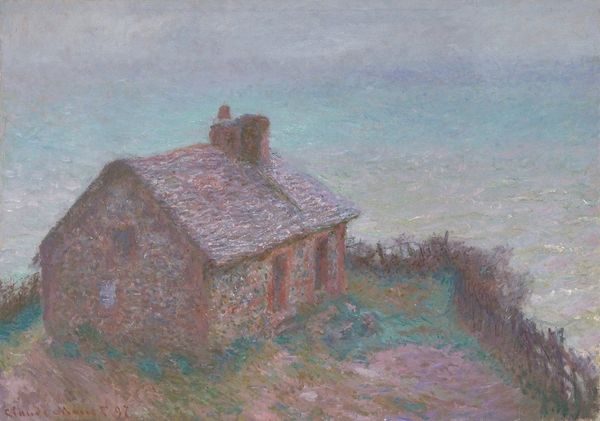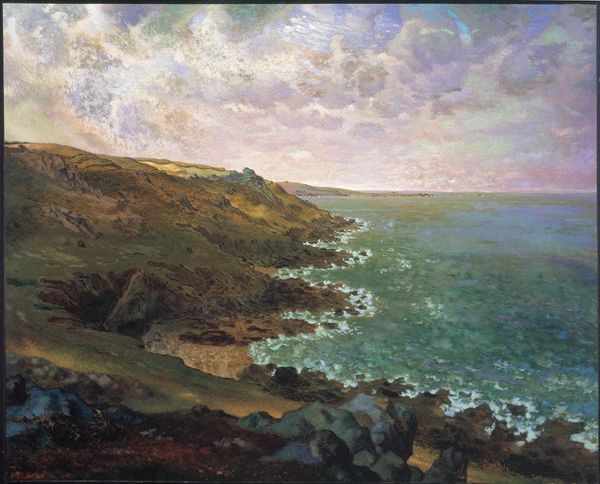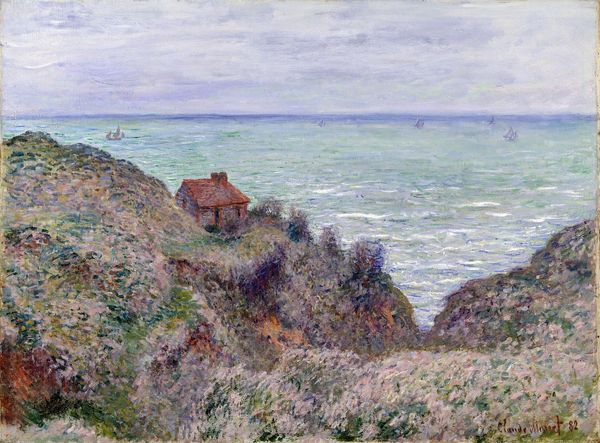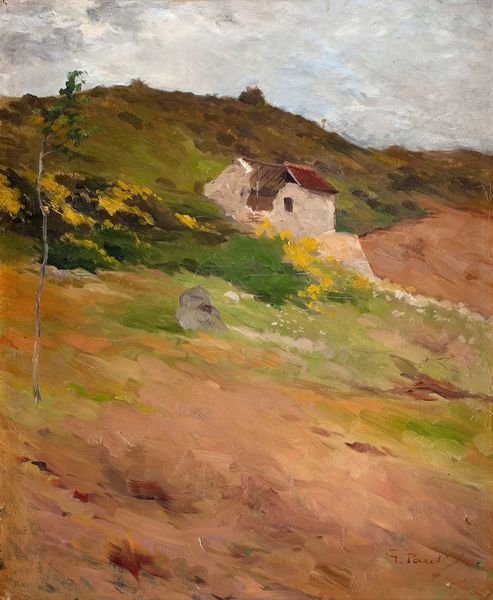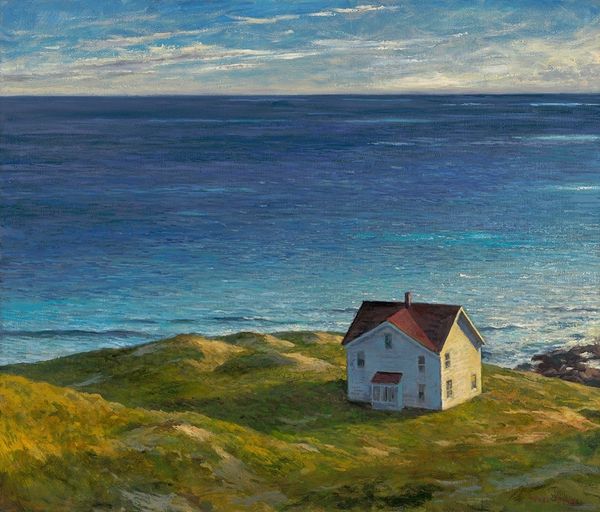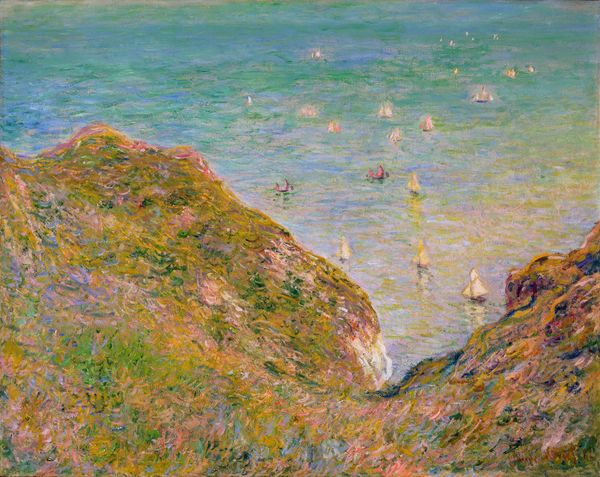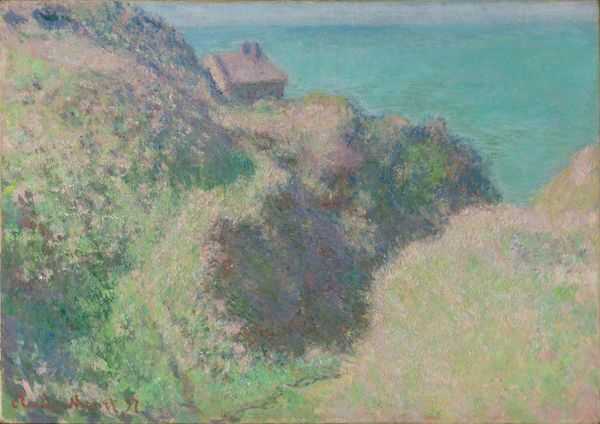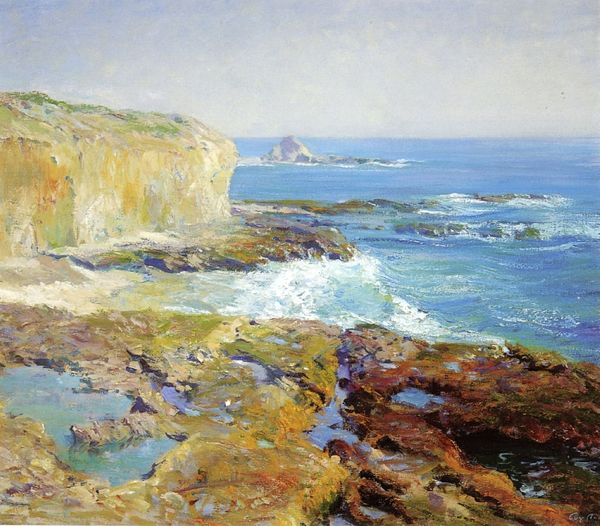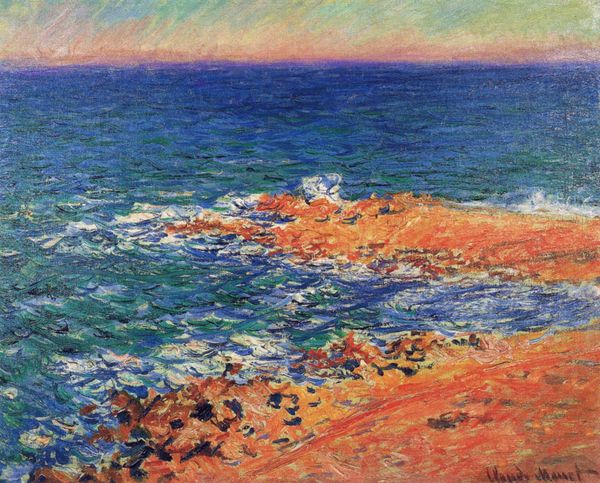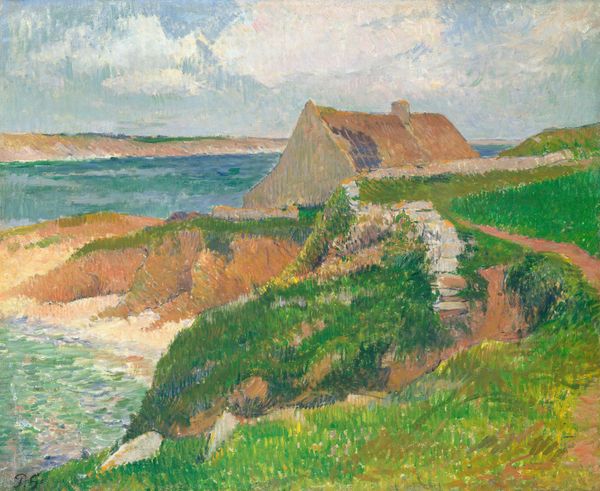
painting, plein-air, oil-paint
#
sky
#
cliff
#
rural-area
#
painting
#
impressionism
#
impressionist painting style
#
plein-air
#
oil-paint
#
landscape
#
house
#
impressionist landscape
#
oil painting
#
rock
#
seascape
#
cityscape
Copyright: Public domain
Editor: This is "The Custom's House," painted by Claude Monet in 1882, using oil on canvas. The house sits at the base of what looks like a towering cliff, its small scale emphasizing the vastness of nature. What's striking to me is the solitary feel of it all. What do you see in this piece? Curator: Beyond the immediate visual appeal, I see a powerful commentary on land use and human intervention. The Customs House, originally designed for controlling trade and borders, becomes in Monet's hands a symbol of something far more complex when viewed from the perspective of 1882. Monet is actively drawing attention to issues of human ownership and intervention. This small building against the immensity of the landscape invites us to consider the societal impact of this type of occupation and use, in its disruption to natural harmony. How might its original social function contrast with the timeless, enduring quality of the natural landscape depicted? Editor: That's a perspective I hadn't considered. I was mainly drawn to the visual contrast and that house seems very isolated. Does the impressionistic style also contribute to this sense of isolation? Curator: Absolutely. Monet’s brushstrokes, dissolving the clarity of form, mirrors the dissolving of traditional societal structures during this time. The indistinct boundaries blur the lines between the house and its surrounding environment, thus emphasizing this cultural tension between the economic interests, land and society. This isn't merely a pretty picture; it's a challenge to our understanding of landscape, and human’s manipulation of natural landscapes as purely commercial properties. Editor: I never thought of landscape painting as something inherently political. I’ll definitely be seeing these types of paintings in a different way from now on! Curator: That is the point! Thinking about art beyond what you see opens discussions to consider what the piece MEANS, what the social message or societal point-of-view the artist is communicating. It brings more art into activism.
Comments
No comments
Be the first to comment and join the conversation on the ultimate creative platform.
